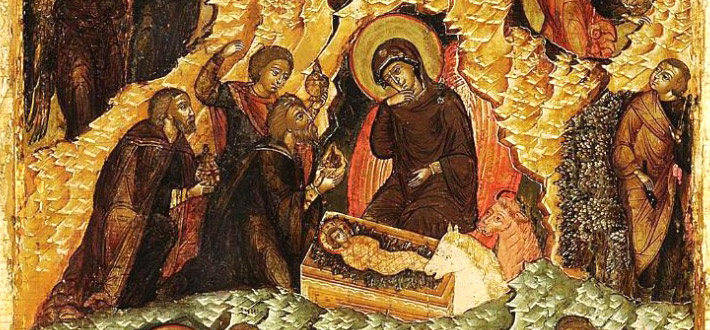
Historical Jesus: Who Do Men Say That I Am?
“If one wishes to understand the historical Jesus and early Christianity one must understand first-century Judaism. During this historic era the Roman occupiers of the land were particularly oppressive and there was much opposition to them particularly in the Galilee,” says Rabbi Moshe Reiss, PhD.

Not much is known about the historical Jesus since nothing was written down by him or about him during his lifetime. The most well-known documented references are by the Jewish historian Josephus who was born in 37 CE, shortly after the crucifixion. He refers to Jesus twice in his 20-volume Antiquities of the Jews. First, in a section known as the Testimonium Flavianum (18.3.3) dealing with various actions of Pilate, he writes, “Now there was about this time Jesus, a wise man, if it be lawful to call him a man, for he was a doer of wonderful works, a teacher of such men as receive the truth with pleasure. He drew over to him both many of the Jews, and many of the Gentiles. He was the Christ, and when Pilate, at the suggestion of the principal men among us, had condemned him to the cross, those that loved him at the first did not forsake him; for he appeared to them alive again the third day; as the divine prophets had foretold these and ten thousand other wonderful things concerning him. And the tribe of Christians so named from him are not extinct at this day.” Then in Book 20.9.1 there is a passing reference to Jesus in a paragraph describing the murder of Jesus’ brother, James, at the hands of Ananus, the High Priest: “… so he assembled a council of judges, and brought before it the brother of Jesus the so-called Christ, whose name was James, together with some others and having accused them as lawbreakers, he delivered them over to be stoned.”
The stoic philosopher Mara bar Serapion, in a letter to his son dated about 73 CE, refers to the unjust treatment of “three wise men”: Socrates, Pythagoras, and “the wise king” of the Jews. And the historian Tacitus, Roman scholar and senator, in his work The Annals of Imperial Rome written about 116 CE, refers to Christ and his execution by Pontius Pilate: “Consequently, to get rid of the report, Nero fastened the guilt and inflicted the most exquisite tortures on a class hated for their abominations, called Christians by the populace. Christus, from whom the name had its origin, suffered the extreme penalty during the reign of Tiberius at the hands of one of our procurators, Pontius Pilatus, and a most mischievous superstition, thus checked for the moment, again broke out not only in Judaea, the first source of the evil, but even in Rome, where all things hideous and shameful from every part of the world find their centre and become popular.”
Jesus is believed to have been born around 4 CE and is thought to have died around 30 to 36 CE. He was a Jew, born probably in Nazareth in Galilee and he probably had brothers and sisters. According to scholars such as Rabbi Moshe Reiss, quoted above, it is very likely that “He had a typical Galilean Jewish education including studying the Hebrew Bible, the traditions of the people after the biblical period and he undoubtedly went to synagogue. One can safely assume his family as religious Jews kept the commandments; dietary laws, circumcision, tithing, laws of purity and the pilgrimages to Jerusalem. Jesus dressed like a Jew, prayed like a Jew, taught and argued in parables like a Jewish Rabbi and was crucified as were many first century Jewish radicals.”
As Rodney Stark, in his book The Triumph of Christianity: How the Jesus Movement Became the World’s Largest Religion, notes that in Aramaic—the language Jesus spoke—the word for carpenter is nagger, which is also the word for “scholar” or “man of learning.” It seems more likely that both Jesus and Joseph were men of learning rather than carpenters. Jesus’s followers called him “Rabbi” or teacher. The Greek word for carpenter is tekton, a generic word meaning “craftsman” or “worker,” that encapsulates a cabinet maker, a cooper (someone who makes barrels), someone who fixes things, or even a shipbuilder.

He was an itinerant teacher who attracted crowds and apparently performed miracles. By all accounts he was a charismatic teacher who spoke with an oral brilliance. He was in many ways both typical of his times, and yet extraordinary in his insights, in his scholarship and understanding of the biblical literature, and in the fervency with which he lived what he taught.
We are told that he had a number of disputes with Jewish religious leaders, probably Shammaite Pharisees (see below), who disputed with him on the law and who—in cooperation with the priestly aristocracy, the Sadducees—handed him over to the Romans, who had him crucified.
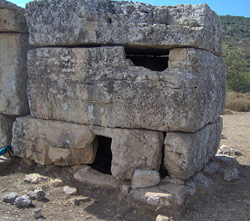
Jesus appears on the scene at a time reminiscent of the tumultuous times of Axial Sages. The oppressive rule of the Roman Empire caused rebellion and a large number of political and sectarian groups called for different kinds of reform, with different ideas about the individual and their country’s future.
Prophets, Messianic Zealots, Hellenists, Romanists, Sadducees and others all contributed to the unrest of the times. One of the most progressive groups was the Pharisees, who were repelled by violence and who emphasized that God was present in every thought and action. Atonement for one’s sins could be attained through acts of kindness rather than animal sacrifice. Rabbi Hillel (c. 65 BCE–20 CE) who came to Palestine from Babylonia, was perhaps the greatest of their number. As did the Axial sages before him, he advocated the importance of personal responsibility: “If I am not for myself, who will be for me? And when I am for myself, what am ‘I’? And if not now, when?” (Avot 1:14)
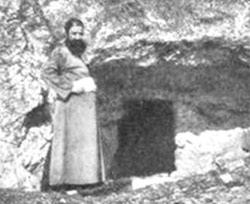
Similarities between the sayings of Hillel and those spoken by Jesus in the New Testament have been noted by scholars. Here are examples:
One of the famous Talmudic stories tells that the Pharisee Shammai—a fundamentalist and opposed to Hillel’s views—was visited by a pagan who promised to convert to Judaism if the rabbi could teach him everything that was in the Torah while he stood on one leg.
Shammai dismissed him angrily, but when the joker went to Hillel, Hillel replied: “That which is hateful to you, do not do to your fellow. That is the whole Torah; the rest is the explanation; go and learn.” (Shabbat 31a)
The same idea is found spoken by Jesus in Matthew 7:12 NIV when he says, “do to others what you would have them do to you, for this sums up the Law and the Prophets.”
Hillel is quoted as saying, “Pass not judgment upon thy neighbor until thou hast put thyself in his place.” Which is again familiar to New Testament readers where, in Luke 6:37 NIV, Jesus says: “Do not judge, and you will not be judged. Do not condemn, and you will not be condemned.”
Hillel also said: “Whoever would make a name loses the name… whoever makes use of the crown perishes.” And according to Luke 7:33 (NIV) Jesus said: “Whoever tries to keep his life will lose it, and whoever loses his life will preserve it.”
Hillel and his group believed in the Resurrection—for they believed that Elijah had ascended to Heaven—and were flexible in their interpretation of the Law. They accepted Gentile converts, taught that one should “love peace, seek peace, love mankind and thus lead them to the law.”
Shammai and his associates disagreed with them on this and on almost every aspect of the Law; so when Hillel died around 10–20 CE and the Shammaite Pharisees took control of the Temple, things changed.
“Hillel who died when Jesus was young … influenced strongly many facets of Jesus’ theological and ethical teachings. This does not imply that Jesus was a student or disciple of Hillel; Hillel’s views were well known and embodied as one of the more acceptable Jewish views of Halakha (Law) particularly among the populace…” says Rabbi Moshe Reiss, PhD.
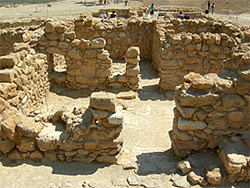
One of the groups we know about was the Essenes, a philosophic and religious sect, so distraught with the way things were in Jerusalem that some left for the desert and set up a community in Qumran.
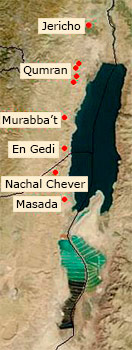
We know about this community mostly from the Dead Sea Scrolls, a group of 930 documents dated from 250 BCE–50 CE and found in the mid-twentieth century in caves near what is believed to be the community ruins.
According to L. Michael White, Professor of Classics and Director of the Religious Studies Program, University of Texas at Austin, it is a mistake to think that the Essenes believed in an imminent end of the world. “They used language like ‘the end’ or ‘the last things’ or ‘the last days’, but what they mean is the present evil age is coming to an end.” This was in line with Jewish eschatology of the time. Many believed that the end of Roman rule and the end of corruption was imminent and would bring with it a new kingdom, not necessarily accompanied by a Messianic figure.
“At Qumran, on the other hand, among the Dead Sea Scrolls we hear not of just one Messiah, but at least two,” continues Dr. White. “Some of their writings talk about a Messiah of David, who is a kind of kingly figure who will come to lead the war. But there is also a Messiah of Aaron, a priestly figure, who will come to restore the Temple at Jerusalem to its proper purity and worship of God.”
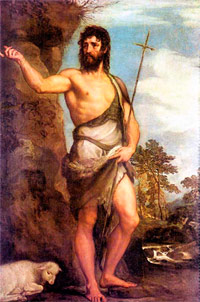
It has often been speculated that both John the Baptist and Jesus were at one time members of this Essene community. They were definitely figures of this period. Professor John Dominic Crossan gives a description of their different roles, which seem to reflect Professor White’s description of the two Messiahs above:
“The difference I see between John the Baptist and Jesus is, to use some fancy academic language, that John is an apocalyptic eschatologist. An eschatologist is somebody who sees that the problem of the world is so radical that it’s going to take some kind of divine radical solution to solve it. That type, for example, is John. God is going to descend in some sort of a catastrophic event to solve the world. There is another type of eschatology. And that’s what I think Jesus is talking [about]. I’m going to call it ethical eschatology. That is the demand that God is making on us, not us on God so much as God on us, to do something about the evil in the world. In an apocalypse, as it were, we are waiting for God. And in ethical eschatology, God is waiting for us. That’s, I think, what Jesus is talking about in the Kingdom of God. It’s a demand for us to do something in conjunction with God. It is the Kingdom of God. But it’s the Kingdom on earth of God.”
“Who Do Men Say That I Am?”
Jesus asks this question in the gospel of Mark (8:27). A Google search for “Who Was Jesus?” turns up more than 50 million entries.
Originally, there were likely hundreds of accounts of Jesus by people who told and retold his stories, parables and sayings. There were probably also dozens of accounts written about him and his work. It is impossible now to arrive at an answer to this question to satisfy each of us: scholars, religious people of all denominations and seekers of all persuasions. We must all come to our own speculations or conclusions.
Matthew (5:17–18) stresses that Jesus was part of a continuous tradition of Jewish teachers that go back to the prophets, to Abraham, Moses, Isaiah and most recently before him, to Hillel.
Rabbi Moshe Reiss says, “The Prophet did not necessarily foretell the future although some did. He was first and foremost a proclaimer of God’s truth with a social message. … Prophets were men who by the nature of the profession placed upon them were men of truth. They were extremists and consequently they told the absolute truth. They brooked no excuse, no compromise; they thundered their passionate denunciations and their demand for absolute justice. All of this can be said about Jesus.”
Eminent scholars such as A.N. Wilson in Jesus: A Life, and Géza Vermès in Jesus the Jew also firmly place Jesus in the Jewish prophetic tradition, as does David Flusser of the Jerusalem School for the Study of the Synoptic Gospels: “He represented a humanistic trend in Judaism that was then developing out of the liberal wing of the School of Hillel.”
The twentieth-century humanitarian Albert Schweitzer, and other more contemporary scholars like Bart Ehrman, claim that Jesus can best be understood as a first-century apocalyptic prophet, who fully expected the end of the world was at hand when God would come down and throw out existing corrupt institutions and impose a new order on the earth: the Kingdom of God.
In contrast, others claim that Jesus’s life and teaching were influenced by Buddhism, citing close parallels between early Buddhist texts, the “Q” materials and the extensive penetration of Indian culture and ideas into the Bible lands up to the time of Jesus. Scholars such as Burton Mack and Dominic Crossan conclude that Jesus is best described as a Jewish Cynic. He lived at a time when these philosophical teachers were active in the area, and the Greek-oriented city Sepphoris was not far from Nazareth. Like the Cynics, Jesus does seem to have been an itinerant teacher who questioned not only authority, but hypocrisy everywhere and anywhere.
Such parallels, though useful as an aid to understanding what these Teachers of Wisdom might have in common, in the specifics may be merely coincidental, since parallel traditions may emerge in different cultures without direct influence, just as they appear to have done in the Axial Age.
Still others, such as S.G.F. Brandon in Jesus and the Zealots (first published in 1967), picture Jesus as a politically aware activist vigorously working against the Palestinian “Establishment” which, of course, was the Roman occupying forces and Jerusalem’s collaborationist Jewish aristocracy. As a champion of the poor, says Brandon, Jesus went so far as to lead an abortive raid on the Temple treasury to dispossess its money-hungry directors. The raid, disguised in the Gospels as a one-man assault on the profane money changers, quickly led to Jesus’s denunciation by the high priests and then to his Roman trial.
Brandon claims that far from dying ignominiously as a Jew rejected by his nation, Jesus in effect died a patriot’s death, a rebel-martyr for his people. Jesus is represented as urging his hearers to repentance because only through this and the observance of the Torah would the Jewish people reach a state of moral and spiritual readiness for the coming of the kingdom of God: “How he conceived of his own role in this is not clear. An interminable discussion revolves around the meaning of the expression ‘Son of man’ and Jesus’ use of it, and no certain answer can be given to the question whether he considered himself to be the Messiah; that his followers so regarded him is, however, beyond serious doubt.”
